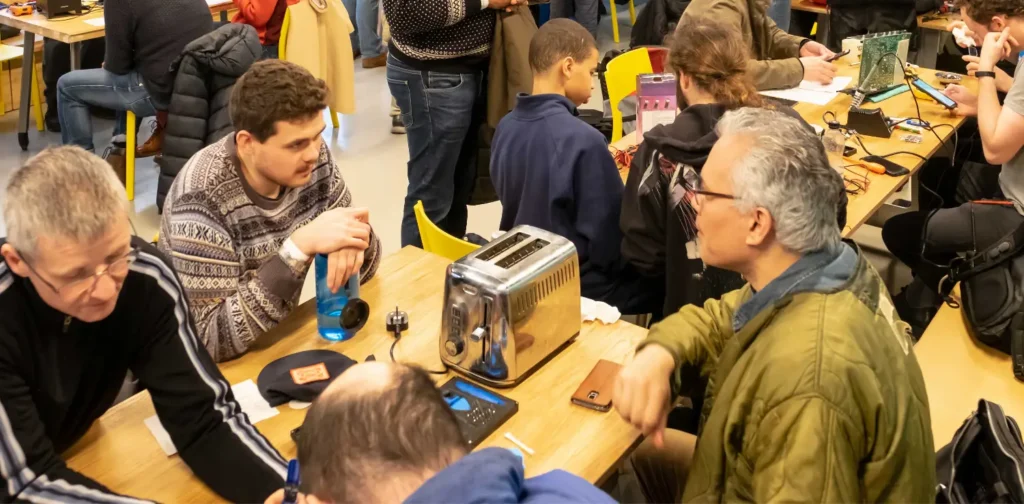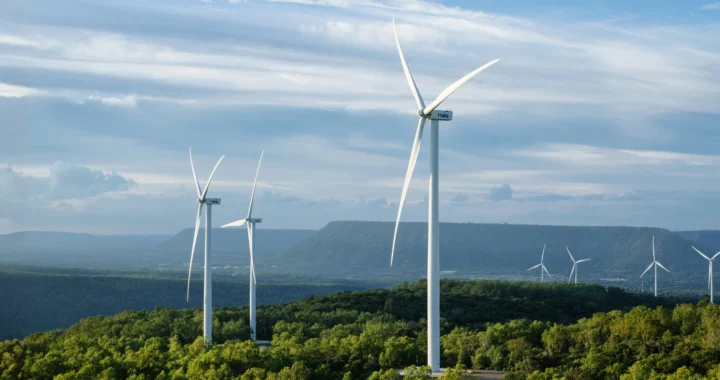The Rising Trend of Community Repair

The Big Fixing, February 2020 | Photo by The Restart Project / Mark Phillips
As time goes, there are more and more things in the world. Eventually, they become more and more waste. These unsustainable production and consumption patterns put a burden on the planet. With threats of irreversible pollution and the climate crisis looming, transitioning to a circular economy seems prudent. In this light, the rising trend of community repair is a good sign and a call for better systems.
Growing Waste
In this fast-paced world, it is easier to throw any slightly malfunctioning thing away and buy a new one. This behavior is by design so producers can sell more.
In the European Union alone, 35 million tonnes of waste comes from the premature disposal of consumer goods every year. Globally, electric waste (e-waste) is one of the fastest growing waste streams, generating 62 million tonnes of waste in 2022. With only 12% of them recycled, the cost on greenhouse gas emissions, resources, and consumers’ finance is extensive.
Community Repair, a Rising Trend
In October 2009, journalist Martine Postma initiated the Repair Café, a community repair concept, in Amsterdam. The concept is simple: gather with your local community and fix broken things together. Since then, similar groups and events have popped up around the world.
“Repairing is not a new everyday practice. But it is only since 15 years that people have been increasingly joining together in repair meetings, Repair Cafés and other repair initiatives, in order to counteract rapid and planned obsolescence. Repair Cafés address the meaningless production of ever new things and devices,” said Andrea Baier of the anstiftung Foundation.
“At these events, repairing is a conscious rejection of a culture in which products are already devalued by the next new generation of products as soon as they are put into use.”
A report by the Open Repair Alliance has documented over 200,000 repair attempts by 1,158 community repair groups across 31 countries around the world. From August 2023 to July 2024 alone, there were nearly 70,000 repair attempts of electronic and electrical items. People came with their vacuum cleaners, lamps, tablets, musical instruments, coffee makers, and many other things to fix together.
It is not always a success. According to the data, community repair initiatives could fix 53% of things brought in. The challenges range from spare parts not being available (25%) or too expensive (18%) to the items not being repairable design (16%).
Better Support
Governments’ efforts to tackle the world’s waste issues are still in their baby steps. For instance, Singapore began establishing its e-waste management system based on the Extended Producer Responsibility (EPR) approach in 2020. In Europe, the Right to Repair only began in 2024.
Data from community repair events found that only less than 4% of the items brought in were covered by the Right to Repair law. Many of them were well beyond 10 years old. These insights underscore the necessity for policymakers to be more ambitious and cover existing products, not just future ones.
Furthermore, the report notes that globally, the emphasis has been on recycling. Reuse and repair are widely acknowledged to be more efficient than recycling, but there are no binding requirements to prioritize reuse. Ultimately, reduction must be the priority in the transition to a circular economy, followed by reusing, then recycling. The rising trend of community repair is a sign that people are ready to change. Therefore, governments and businesses must be willing and capable to support the change and clear the path for all.

Join Green Network Asia Membership
If you find this content useful, support Green Network Asia’s movement to create positive impact for people and the planet through public education and multi-stakeholder advocacy on sustainability-related issues and sustainable development. Get exclusive benefits for your personal and professional development.
Become a Member Now
Nazalea Kusuma
Naz is the Manager of International Digital Publications at Green Network Asia. She is an experienced and passionate writer, editor, proofreader, translator, and creative designer with over a decade of portfolio. Her history of living in multiple areas across Southeast Asia and studying Urban and Regional Planning exposed her to diverse peoples and cultures, enriching her perspectives and sharpening her intersectionality mindset in her storytelling and advocacy on sustainability-related issues and sustainable development.


 Building Heat Resilience Amidst Rising Risk in the Asia-Pacific
Building Heat Resilience Amidst Rising Risk in the Asia-Pacific  Sounds Right and Recognizing Nature as an Artist for Biodiversity Conservation
Sounds Right and Recognizing Nature as an Artist for Biodiversity Conservation  Statewide Treaty Bill: Australia’s First Treaty with the Indigenous Australians Passed in Victoria
Statewide Treaty Bill: Australia’s First Treaty with the Indigenous Australians Passed in Victoria  Involving Coastal Communities in Tackling Ghost Nets Pollution
Involving Coastal Communities in Tackling Ghost Nets Pollution  An Interview with Jasmin Lim, Chief Marketing Officer at BH Global
An Interview with Jasmin Lim, Chief Marketing Officer at BH Global  The Monsoon Wind Power Project Supports Energy Transition Across Borders in Southeast Asia
The Monsoon Wind Power Project Supports Energy Transition Across Borders in Southeast Asia